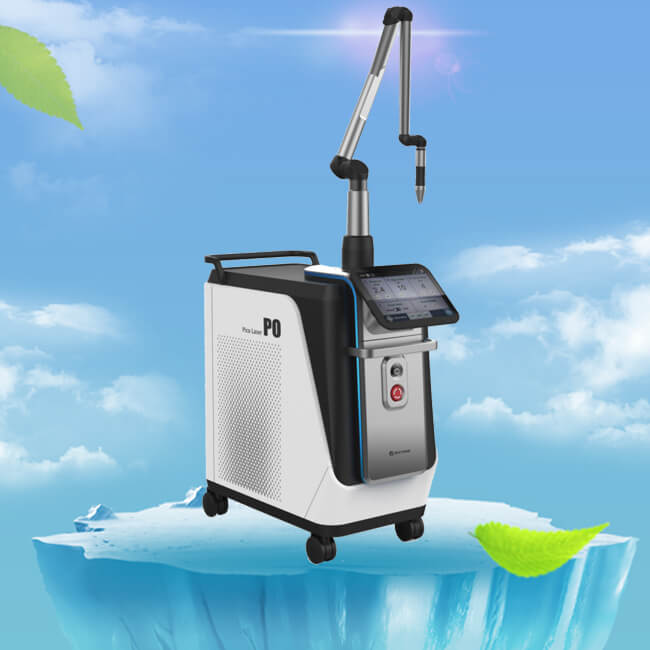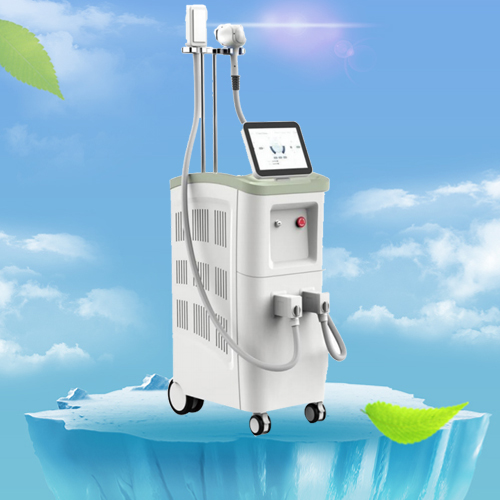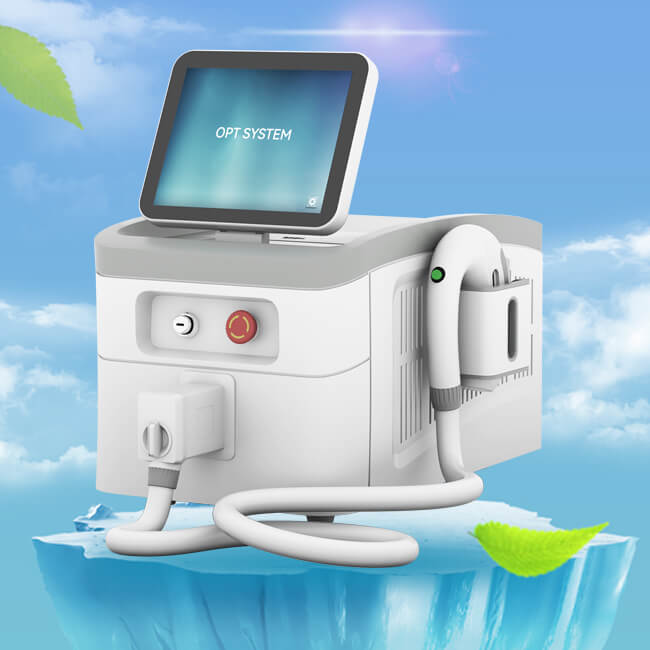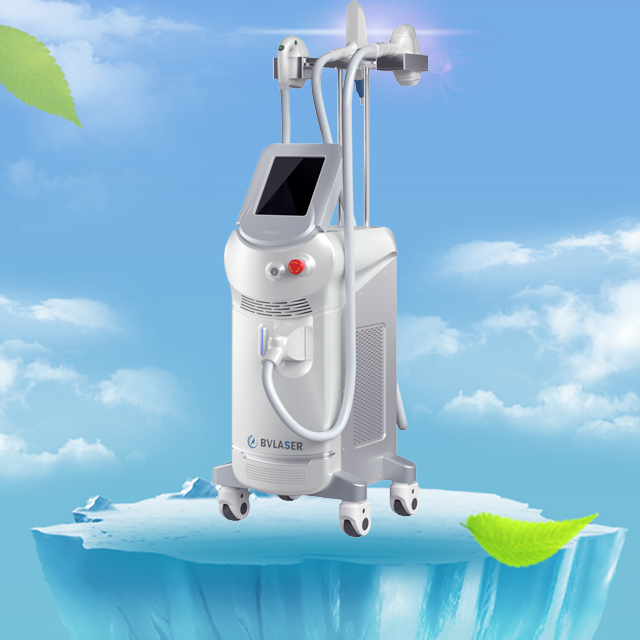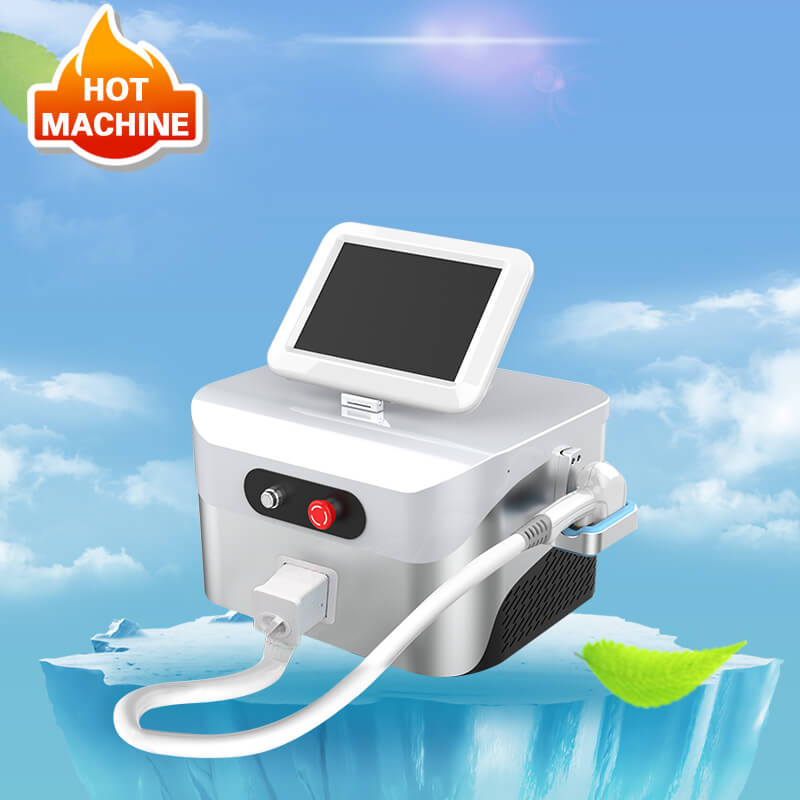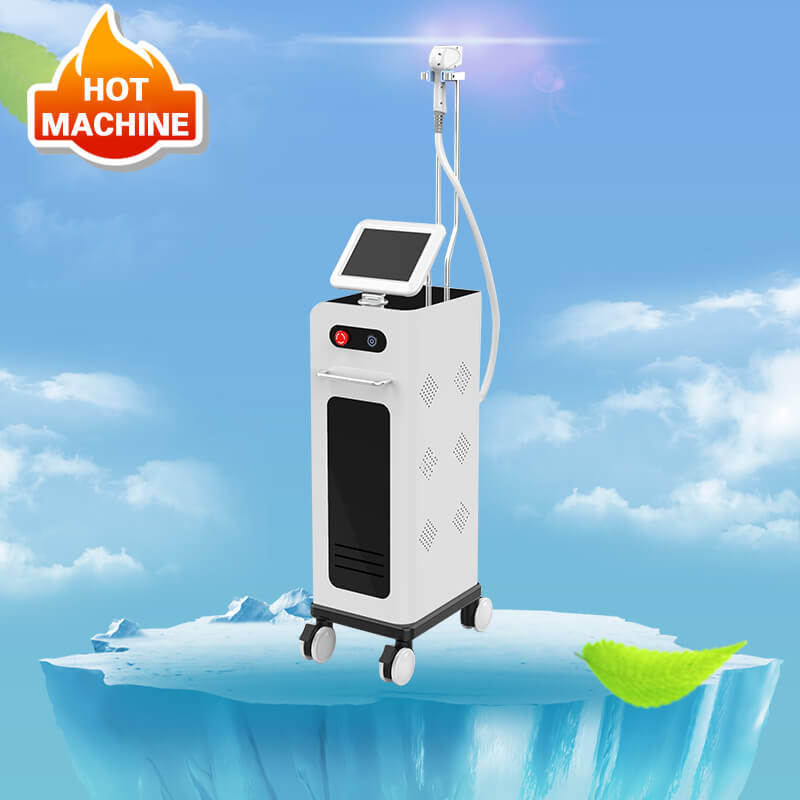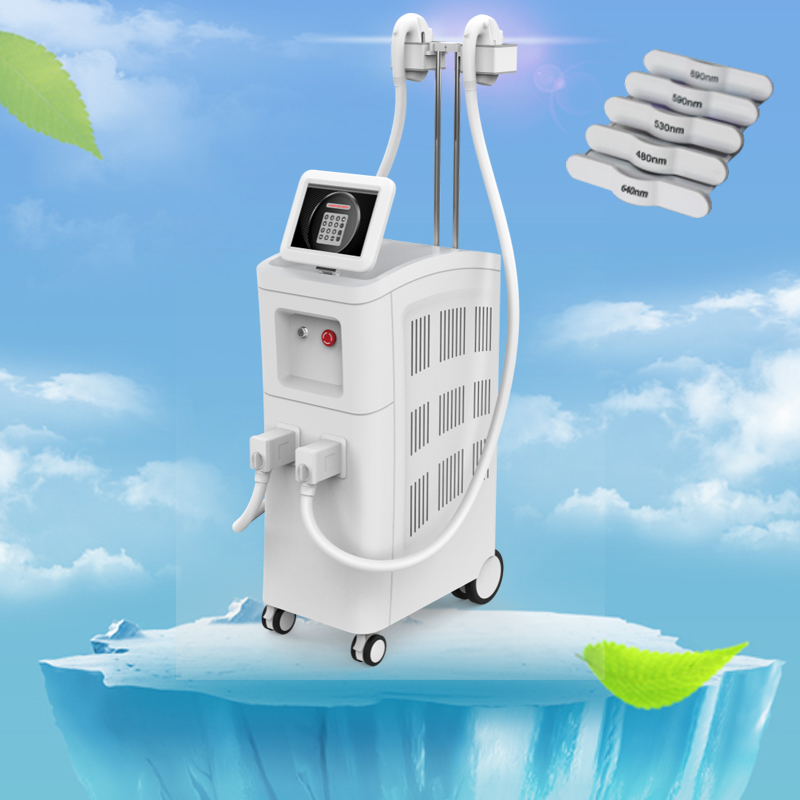Picosecond Laser Can Achieve the Skin of Your Dreams
Author:baishilf Time:2025-05-14 15:59:09
Picosecond pulsed laser technology is among the newest laser skin resurfacing technologies on the market. Pico laser for patients who will benefit from picosecond laser technology. For patients interested in tattoo removal, wrinkle reversal or acne scar remedies, picosecond laser skin rejuvenation is likely a smart choice. Bestview Laser is a China picosecond laser 1064nm machine manufacturer.
Picosecond laser skin rejuvenation is FDA-approved for laser treatment of pigment—most notably, tattoos. Picosecond technology refers to the rate at which laser energy is delivered to the skin. In this case, a laser beam at a specified energy level is delivered within a picosecond (one trillionth of a second). This is an extremely rapid rate of laser beam delivery which essentially remodels the skin and triggers an intense collagen production response. The best part of picosecond laser skin rejuvenation is the limited downtime and is safe for all skin types. Patients only experience a few hours of pink, sensitive skin after treatment.
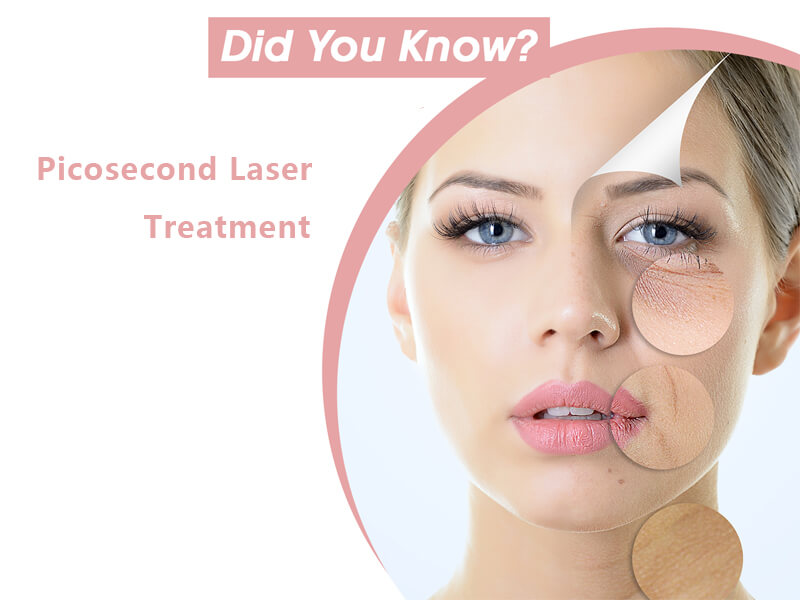
Emerging Option for Tattoo Removal
We all have things in our past we’d like to erase. For many of us, this includes one or more tattoos. Luckily, picosecond laser technology makes it possible to remove body ink faster and more effectively than ever before. If you are considering laser tattoo removal, it is important to keep in mind that not all lasers for tattoo removal are created equally. The colors of your tattoo matter, as well as how deep the ink is embedded. Not all tattoo removal devices have the wavelengths that can target the full spectrum of pigment colors. Removing light blue and green pigments are notoriously difficult. Picosecond laser tattoo removal machine can effectively treat all tattoo colors and do so precisely and evenly—reducing the discomfort and recovery time often associated with laser tattoo removal.
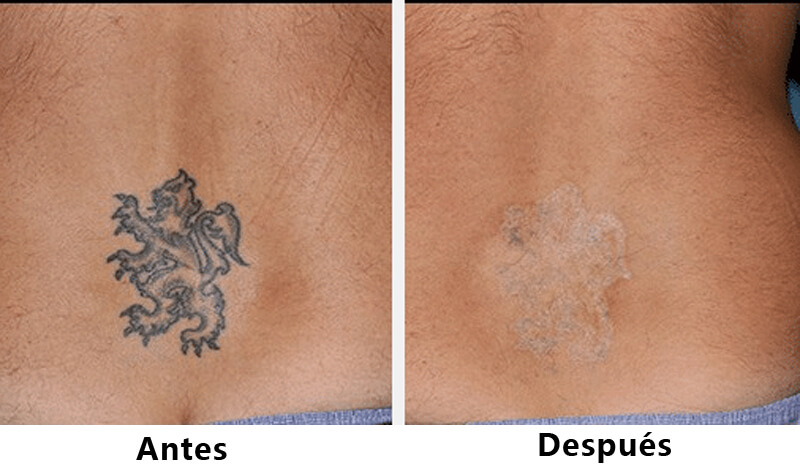
Improve Acne Scarring
Effective treatment of acne scars remains a major challenge, but picosecond laser therapy makes it easier. We know how psychologically debilitating acne scars and pockmarks can be for our patients, which is why we are excited to offer picosecond laser therapy to help reduce the appearance of acne scars, and in some cases, erase them completely. As new skin cells form, acne scars and pockmarks will gradually fade away as the damaged tissues are naturally replaced. This is different from the typical treatment for acne scarring, which is a fractional ablative laser (although we have this option as well). These lasers are rougher on the skin and work by removing layers of skin to even out its tone, which can take up to a month to heal. The picosecond laser does not remove parts of the skin and thus results in a faster, less painful healing process. For patients who are unable to take time off from work for healing, the picosecond laser may be a better option. Patients who undergo picosecond laser therapy for acne scars will experience very little, if any downtime or discomfort, and depending on the severity of scarring, multiple appointments may be recommended.
Wrinkle Reversal
Picosecond laser therapy works for wrinkle reversal by using an add-on to the Pico laser that redistributes the picosecond beam into hundreds of microbeams to smooth the skin. It is a relatively painless procedure that does not require any downtime. It works to reverse wrinkles in two ways. First, it drives vigorous collagen remodeling due to the effect of the laser on the skin and the ablation of tissue. Second, it creates microscopic holes in the skin that do not immediately close, which allows cosmeceuticals, vitamins, growth factors or other topical compounds to penetrate deep into the dermis. Picosecond laser therapy treatments are completely customizable based on your goals. You can opt to receive treatment more gently over the course of multiple sessions, or for faster results, you may choose to receive fewer, more aggressive treatments. Either choice will still result in rapid healing and low downtime.
How Long To See Results From Picosecond Laser Treatments
Wondering ‘how long to see results from a picosecond laser?’ Typically, visible improvements start to emerge 2-3 weeks post treatment, with ongoing enhancements as your skin naturally heals. Read on as we break down the factors influencing your personal timeline and what to anticipate at each stage of the process.
Picosecond laser results emerge progressively over several weeks post-treatment, influenced by factors such as age, skin condition, type, and tone, with full results and improvements visible up to a year after treatment. Picosecond laser treatment is versatile and can address various skin concerns ranging from pore size reduction to pigmentation issues, with the timeline and number of sessions varying based on the skin concern’s severity and desired results. The overall success of Picosecond laser treatments is influenced by multiple factors, including treatment frequency, individual’s biological aspects, laser settings, and proper aftercare, emphasising the need for a tailored approach and a patient-centred treatment plan.
Understanding the Timeline of Picosecond Laser Results
The picosecond laser treatment offers a non-surgical approach to addressing various skin conditions and has become increasingly popular for those seeking enhanced skin rejuvenation. Utilising extremely brief bursts of laser energy, the procedure thoroughly revitalises the skin without imparting heat, thereby minimising discomfort. Within just two to three weeks after receiving this gentle yet effective treatment, patients often begin noticing an improved complexion and smoother skin texture—a transformation that continues progressing towards their ultimate goal.
Nevertheless, when it comes to observing tangible results from picosecond laser treatments, patient experiences will differ based on several contributing elements such as age, specific skin condition being treated, individual’s natural skin type and tone, along with how pronounced the targeted concern may be.
Thus, prescribed timeframes can vary. Some individuals see changes promptly within a few weeks, while others require additional patience before witnessing improvement. This bespoke process is what makes each person’s journey toward betterment uniquely their own through the tailored application of Picosecond Laser technology.
Initial Changes Post-Treatment
Following your Picosecond treatment, it’s common to experience certain reactions in the skin, which can include:
*Minor bruising.
*A reddened appearance.
*Swelling at the site of treatment.
*Sensations that may remind you of a sunburn.
These are normal responses due to the enhanced circulation to the area receiving treatment and they typically diminish within a few hours after the procedure.
It is important during recovery not to scratch or rub on these areas for proper healing. There could also be a slight darkening or bronzing of your skin appearing between 3 and 10 days post-treatment. This is especially noted with lighter skin tones experiencing mild scarring. These preliminary changes signify that your skin is undergoing its transformation towards a more luminous state.
Visible Improvements and Skin Healing
Upon beginning your journey with Picosecond laser treatments, the initial fruits of skin revitalisation tend to manifest between 2 and 3 weeks post-treatment. This is when you may notice enhanced brightness and a renewed look that serve as an introduction to Improvements. These enhancements from the picosecond laser therapy will continue to emerge slowly as they are intrinsically linked to your body’s own regenerative capabilities.
As this regeneration advances, one can expect gradual refinement in both the texture and tone of their skin along with a reduction in issues related to skin pigmentation. Post-laser treatment, it’s common for pigmented areas on the skin to appear darker over a span ranging from 1 week up until about 3 weeks. Subsequently, these darkened spots begin lightening—a clear indicator marking progress within the healing timeline following your procedure. Your complexion undergoes an exquisite transformation during which it discloses its newfound glow bit by bit.
Long-Term Effects on Skin Quality
Laser treatments with a picosecond laser not only yield immediate enhancements, but also promote lasting improvements in skin health. These long-term benefits manifest through improved signs of facial photoaging, including better skin texture and reduced dyspigmentation. The remarkable effect of the fractional picosecond laser is its stimulation of natural skin regeneration and remodelling in the dermis.
The quality of your skin will keep on improving after the picosecond laser treatment, exhibiting diminished pigmentation and fewer wrinkles. Reports suggest that even six months post-treatment, individuals experienced noticeable reductions in pore size following picosecond laser sessions.
To elevate your results Consider combining picosecond laser procedures with other aesthetic treatments like fillers or botulinum toxin injections. This can enhance overall outcomes and create complementary effects for more comprehensive facial rejuvenation.
The Speed of Results for Common Skin Concerns
Laser treatments utilising picosecond lasers are adept at tackling various skin concerns, such as reducing pore size, enhancing pigmentation and increasing clarity of the skin. Impressively, these improvements can often be noticed just a week after undergoing treatment. To fully address pigmentation problems, it may require approximately three to four sessions with a picosecond laser. Similarly, treating acne scarring effectively might necessitate about four treatments.
Specifically using the Picosecond laser highlights its swift efficacy by noticeably diminishing pore sizes usually within one or two treatments – a testament to how quickly picosecond laser treatments can improve skin texture. While individual results timelines may differ slightly from person to person based on their unique issues and goals for their skin’s appearance. It is clear that each session will contribute progressively towards achieving those desired outcomes in your complexion.
Factors Influencing Your Picosecond Laser Results Timeline
Picosecond laser treatments serve as a powerful method for enhancing skin health, although the timeframe to witness results is not fixed. It depends on various elements, including the nature of your skin type, how regularly you undergo treatments and the way you maintain your skin after treatment sessions. The Picosecond laser provides a safe option applicable to all kinds of skins and complexions with its gentle non-abrasive technique that leaves the skin’s surface intact.
When undergoing picosecond laser therapy, energy is directed towards pigmentations in a manner that prompts an intense shock wave effect which then catalyses collagen production leading to clearer and more rejuvenated skin. Factors such as one’s natural amounts of collagen and elastin along with their inherent rate of cell regeneration (particularly slower cycles often associated with ageing) can significantly impact when improvements become noticeable.
Various specific settings used during treatment influence this timeline:
*Wavelength.
*Pulse duration.
*Area being targeted.
*Energy density.
These are fine-tuned according to an individual’s unique complexion needs hence play an essential role in determining when one may see outcomes from pico laser interventions.
The Role of Picosecond Laser Treatment Frequency
Every individual is distinctive, just like their skin. When it comes to scheduling of picosecond laser treatments, customisation is key and depends on various elements such as the extent of one’s skin issues, personal treatment goals, and how well one’s collagen production reacts to the therapy. For instance, dealing with moderate concerns like apparent pigmentation or early signs of fine lines may warrant a regimen where sessions are spaced every 3 to 4 weeks apart in order to maintain steady collagen synthesis and secure noticeable progress.
In contrast, more acute skin problems such as heavy pigmentation loads, resistant scarring or pronounced wrinkles might necessitate an intensified frequency of treatments at intervals ranging from 2 to 3 weeks in pursuit of substantial and expedited enhancement. Conversely, those grappling with minor pigment-related conditions or aiming for upkeep following previous interventions could opt for extended gaps between appointments. This often falls between every 4 to 6 weeks interval. Ultimately it’s about striking an equilibrium that aligns optimally with both your dermal health requisites and daily life demands.
Lifestyle and Aftercare
Just as careful cultivation is essential for a plant’s growth, diligent post-care is vital to ensure your skin recovers optimally after undergoing picosecond laser treatments. An integral aspect of this care regimen includes shielding the skin from the sun to avoid hyperpigmentation and increased sensitivity following treatment. Thus, it’s imperative to apply broad-spectrum sunscreen consistently with an SPF of 30 or higher.
Following picosecond laser treatment, your skin requires a gentle approach. Steer clear of hot water. Instead opt for a mild oil-free cleanser capped off with light moisturization in support of healthy recovery. Steer clear from engaging in other facial treatments such as fillers, botox or chemical peels shortly after having undergone picosecond laser therapy so that you do not interrupt the natural healing process of your dermis.
Bear in mind that achieving revitalised skin is more akin to a marathon than a quick race – patience coupled with meticulous post-laser care constitutes part of this enduring voyage towards rejuvenation.
Comparing Picosecond Laser to Other Lasers
Picosecond lasers represent a significant advancement in the care of skin, but they are not alone in this arena. Previously, nanosecond duration lasers, like the conventional Q-Switched models, were considered top-notch for addressing pigmented dermal issues such as melasma and wrinkles, besides being pivotal for tattoo removal. How do picosecond lasers compare with these earlier technologies?
Q-Switched lasers have been known to effectively disintegrate larger spots of pigmentation. Nevertheless, employing picosecond lasers subsequently can shatter these pigment fragments even smaller to facilitate more thorough clearance. There could be scenarios where alternative laser options might better serve specific dermatological needs. Ultimately when selecting a laser treatment modality it comes down to pinpointing what exactly is required for each unique skin concern at hand.
Realistic Expectations: What Can You Anticipate After Your First Picosecond Laser Session?
Do not expect a significant change in your skin immediately following your first Picosecond laser treatment. Your skin may feel sensitive and you might notice minor swelling, but these side effects Diminish within a day or even just a few hours.
The full benefits of the picosecond laser treatments on your skin tend to emerge over several weeks rather than instantaneously. Thus, it’s important to remain patient throughout the process. Adhering diligently to the series of treatments recommended by your aesthetic doctor is crucial for achieving optimal results with picosecond laser therapy.





